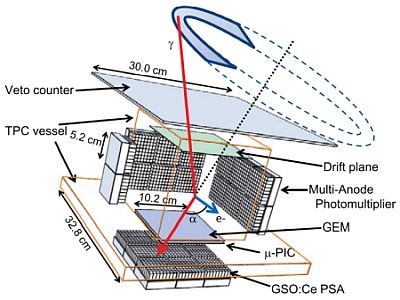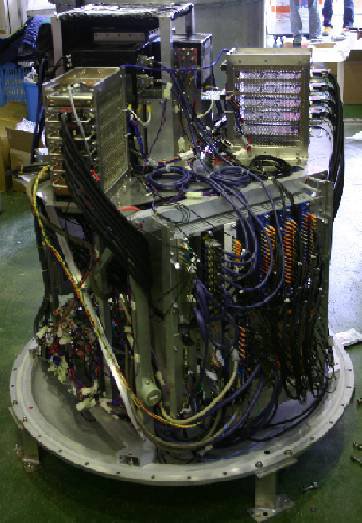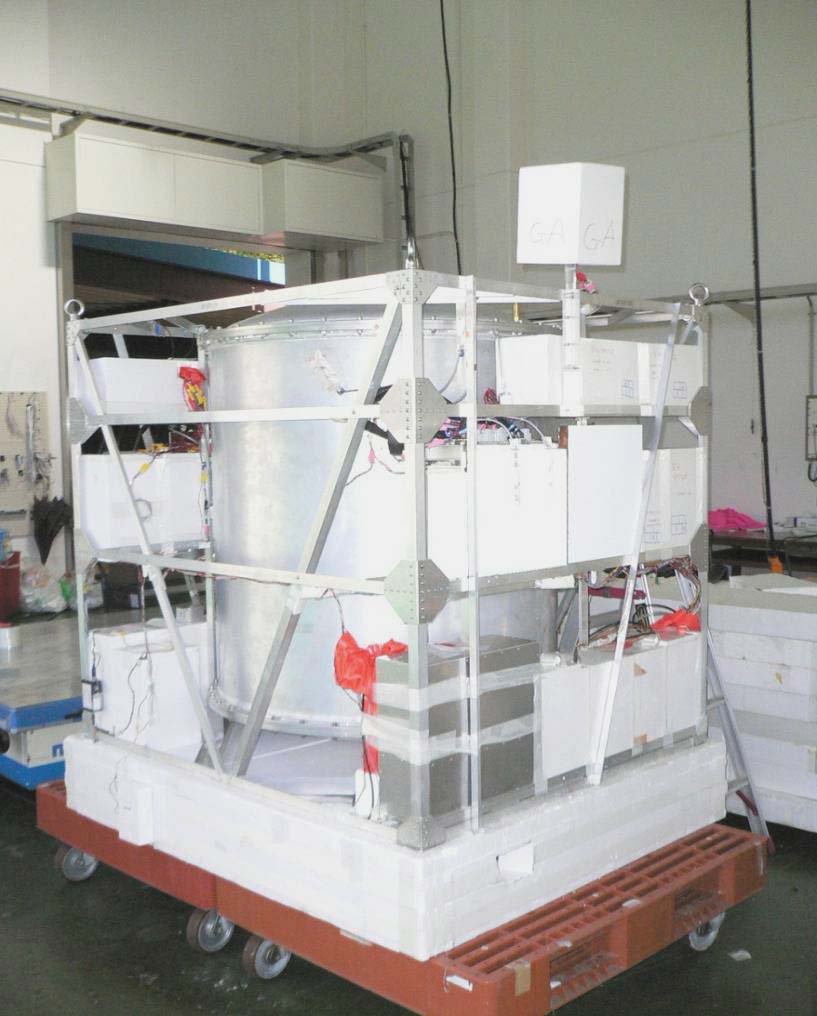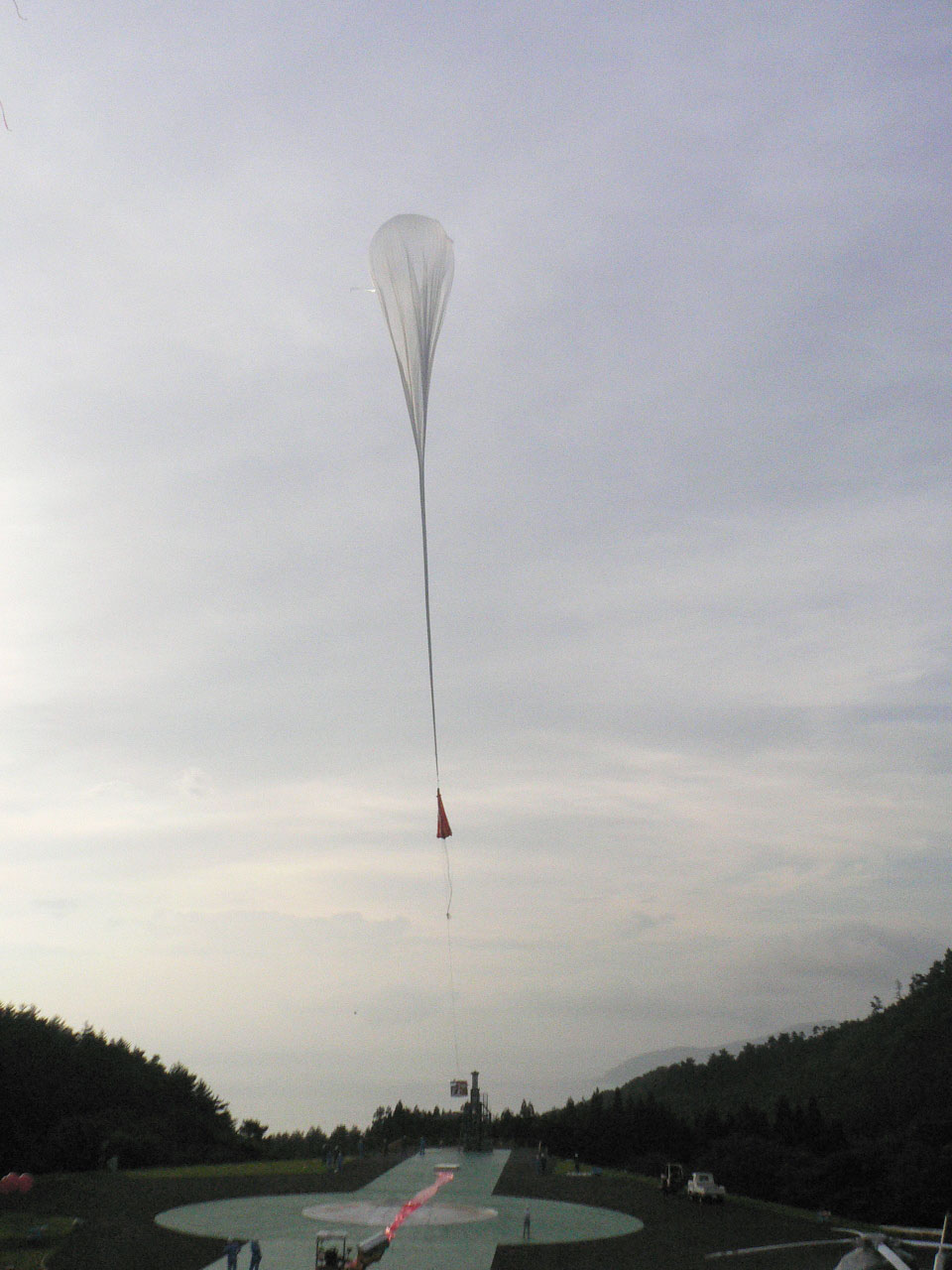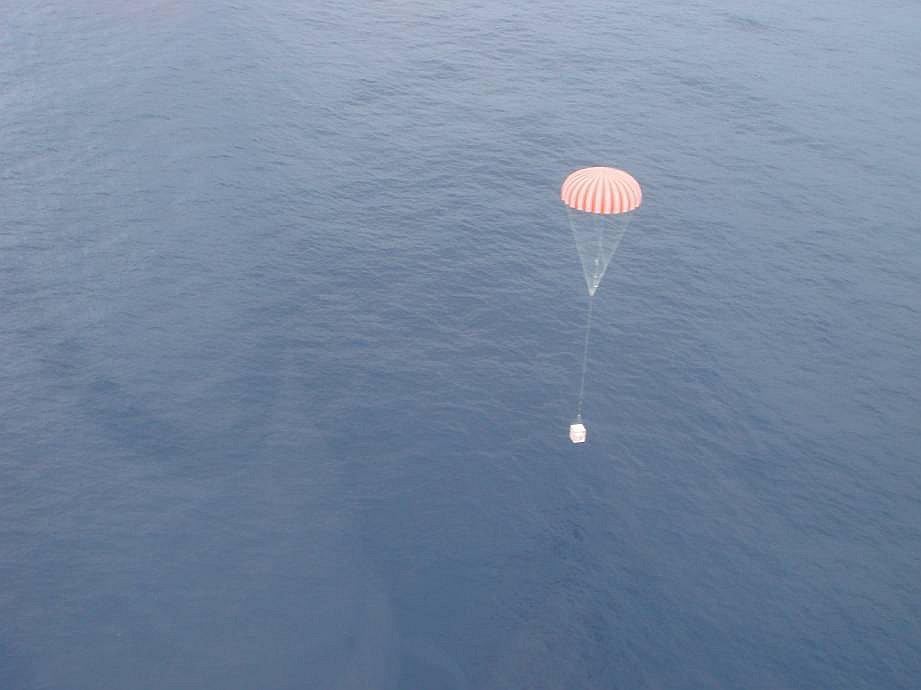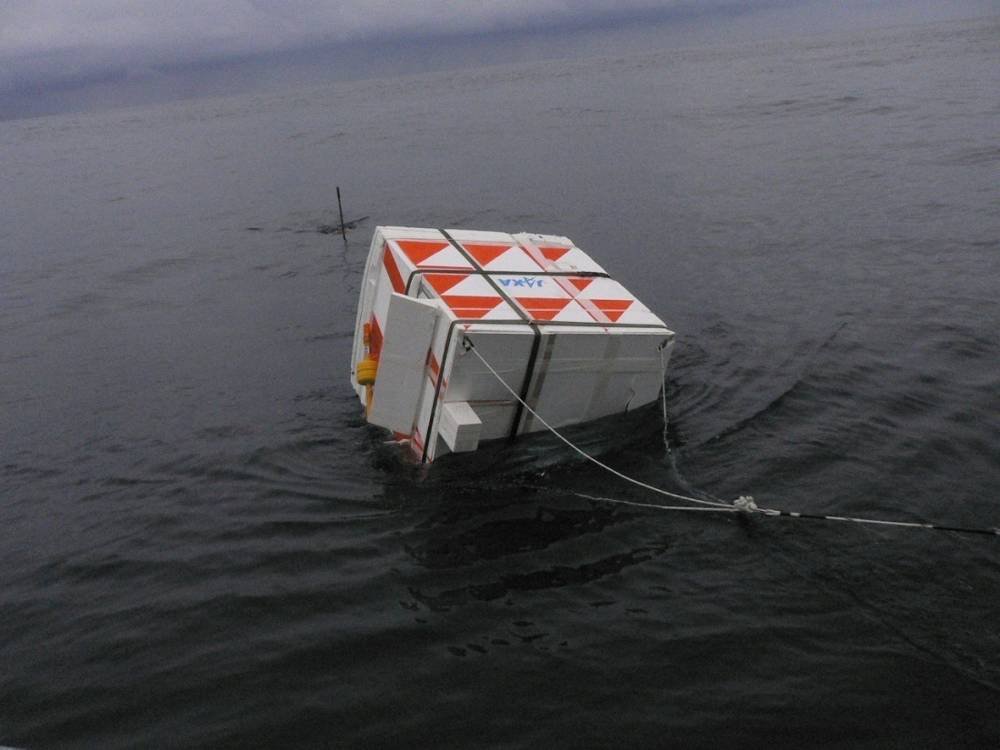Purpose of the flight and payload description
SMILE (Sub-MeV gamma-ray Imaging Loaded-on-balloon Experiment) was a series of experiments to observe sub-MeV gamma rays from celestial objects by using a balloon-borne camera. It was developed in middle 2000s decade at the Kyoto University in Japan.
Working principle
Unlike visible light or X-rays, gamma rays at MeV wavelengths are too short to focus by a mirror or lens. Previous Compton telescopes (space-based and balloon-borne) localized the incident direction of gamma rays on an event circle superposed on the sky, by measuring the direction of a scattered gamma ray and the energy of both a Compton recoil electron and the scattered gamma ray. However, a significant background reduction could be achieved by restricting the incident direction to a reduced arc on the Compton circle, by measuring the track of the Compton recoil electron. Based on that principle, the Kyoto group developed under the SMILE program a new MeV gamma-ray imaging detector capable of measuring three dimensional tracks of Compton-recoil electrons in order to explore the entire sky in the band between 0.1 and 30 MeV.
The Instrument
In the figure above left can be seen a scheme of the SMILE-1 prototype of electron-tracking Compton camera (ETCC). The electron tracker detected the three-dimensional track and the energy of the Compton-recoil electron, while the absorber detected the absorption point and energy of the Compton scattered gamma ray. By summing the momenta of both the recoil electron and the scattered gamma ray, was obtained the momentum of the incident gamma ray and therefore it could be obtained a completely ray-traced gamma-ray image.
The ETCC consisted of a gaseous tracker for detecting Compton-recoil electrons by using gas avalanche detectors to read it. In addition, it had a pixel scintillator array (PSA) for detecting Compton-scattered gamma rays. As a tracker for detecting Compton-recoil electrons, was developed a gaseous time projection chamber (TPC) with a volume of 10 x 10 x 14 cm3 filled with a gas mixture of 80% Xe, 18% Ar, and 2% C2H6 sealed at 1 atm. The readout of the TPC consisted of gas avalanche detectors: a gas electron multiplier (GEM) and a micro-pixel chamber (µ-PIC). The signals from the µ-PIC were read using amplifier-shaper-discriminator chips which feed an output signal from a charge amplifier to a flash analog-to-digital converter to measure the recoil-electron energy and a discriminated digital signal to a position encoder that encoded the electron track by using field-programmable gate arrays. As an absorber for detecting Compton-scattered gamma rays, was used 33 pixel scintillator array (PSAs), each of which consisted of 8 x 8 GSO:Ce scintillator pixels with a pixel size of 6 x 6 x 13 mm3. For the photon sensor of the scintillation camera, was selected a multi-anode photomultiplier tube which consisted of 8 x 8 anode pixels with a pixel size of 6 x 6 mm2. A plastic scintillator with a size of 30 x 30 x 0.3 cm3 was placed 21 cm above the GEM as a veto counter for reducing triggers by charged particles.
For the balloon flight, the ETCC was placed in an aluminum vessel with a diameter of 1 m, a height of 1.4 m, and a thickness of 3 mm. The vessel was maintained at 1 atm and was fixed to an aluminum gondola with a size of 1.2 x 1.5 x 1.6 m3. On two sides of the gondola, batteries and ballast boxes were attached, and the gondola was packed with expanded polystyrene. In addition, the SMILE-I gondola had a fine pressure gauge for measurement of atmospheric pressure a global positioning system receiver for measurement of the balloon's altitude and geographic position, and two clinometers and two geomagnetic aspectometers for determining attitude.
Details of the balloon flight
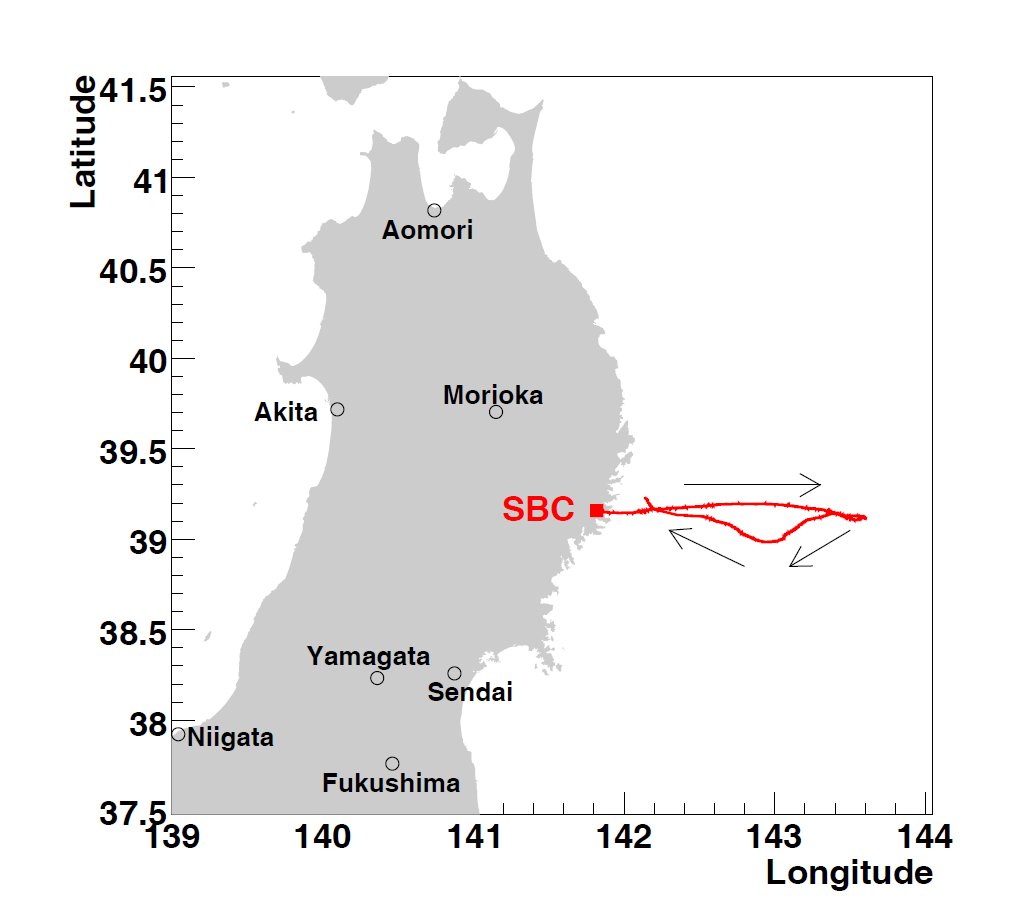
Balloon launched on: 9/1/2006 at 6:11 jst
Launch site: Sanriku Balloon Center, Iwate, Japan
Balloon launched by: Institute of Space and Astronautical Science (ISAS) / Japan Aerospace Exploration Agency (JAXA)
Balloon manufacturer/size/composition: Zero Pressure Balloon model B100 100.000 m3
Flight identification number: B100-16
End of flight (L for landing time, W for last contact, otherwise termination time): 9/1/2006 at 13:20 jst
Balloon flight duration (F: time at float only, otherwise total flight time in d:days / h:hours or m:minutes - ): 7 h 38 m
Landing site: In the Pacific Ocean
The balloon was launched by semi-dynamic method from the Sanriku Balloon Center, on September 1, 2006 at 6:11 Japan Standard Time (JST). The flight path is shown in the map at right (click to enlarge)
At 8:56, the balloon reached an altitude of 35 km and began level flight until 10:15, developing an eastward path. Then from 11:20 to 13:00, the flight altitude was lowered to 32 km and the balloon started a westward flight path.
During level flight between 8:56 and 13:00, were performed the scientific observations.
At 12:59 the payload was turned off and by 13:20 the gondola was separated from the balloon being amerizing at 13:45 and being recovered at 14:32.
External references
- SMILE project website Kyoto University
- Development of Advanced Compton Imaging Camera with Gaseous Electron Tracker and First Flight of Sub-MeV Gamma-Ray Imaging Loaded-on-Balloon Experiment Ph.D Thesis by Atsushi Takada, Kyoto University, 2007
- Information on the balloon flights performed during 2006 (In Japanese) ISAS Annual Report, 2006
- Observation for the celestial sub-MeV and MeV gamma rays by Electron Tracking Compton Camera (In Japanese) JAXA Research and Development Report: Research Reports on High Altitude Balloons, JAXA-RR-07-009 (2008)
- Observation of Diffuse Cosmic and Atmospheric Gamma Rays at Balloon Altitudes with an Electron-tracking Compton Camera The Astrophysical Journal , 733:13, 2011
- Observation of diffuse gamma-ray with Electron-Tracking Compton imaging camera loaded on balloon 2007 IEEE Nuclear Science Symposium Conference Record, 2007, p. 2558
- Sky Survey for MeV Gamma Ray Astronomy using Electron Tracking Compton Camera 26th International Symposium on Space Technology and Science (26th ISTS)
- The Observation of Diffuse Cosmic and Atmospheric Gamma Rays with an Electron-Tracking Compton Camera Loaded on a Balloon J. Phys. Soc. Jpn. 78, pp. 161-164 (2009)
2673If you consider this website interesting or useful, you can help me to keep it up and running with a small donation to cover the operational costs. Just the equivalent of the price of a cup of coffee helps a lot.

